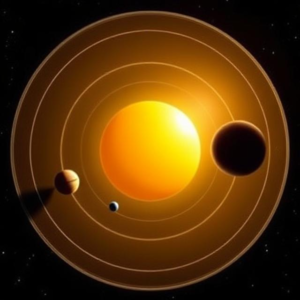What is Renewable Energy?
Renewable Energy is energy that comes from natural sources that are constantly replenished by nature. These sources don’t run out, and they are much cleaner and better for the environment compared to traditional energy sources like coal, oil, or natural gas.
- Why is it important? Renewable energy helps reduce pollution, fights climate change, and provides a sustainable way to meet our energy needs without harming the planet.

Types of Renewable Energy:
There are several types of renewable energy sources, and each one works a little differently:
- Solar Energy (from the sun):
- How it works: Solar panels capture sunlight and turn it into electricity. This is a great source of energy because the sun shines every day (well, most days!) and it’s free.
- Why it’s good: It’s clean, doesn’t pollute, and can be used almost anywhere (homes, schools, businesses).
- Wind Energy (from wind):
- How it works: Wind turbines (those big, tall windmills) capture the wind’s energy to generate electricity. When the wind blows, it turns the blades of the turbine, which then creates power.
- Why it’s good: It’s another clean source of energy and can generate a lot of power, especially in areas where wind is strong.
- Hydropower (Hydroelectric Energy) (from water):
- How it works: Water (like rivers or dams) is used to turn turbines that generate electricity. The water flows over or through turbines, making them spin and create power.
- Why it’s good: It’s a reliable and consistent source of energy, as water flows continuously. However, it’s most effective in areas with large rivers or waterfalls.
- Geothermal Energy (from the earth’s heat):
- How it works: Heat from inside the Earth (from hot rocks or magma) is used to generate electricity or heat buildings. People drill into the Earth to access this heat.
- Why it’s good: It’s very reliable because the Earth’s heat doesn’t run out. However, it’s mostly used in areas near volcanic or tectonic activity.
- Biomass Energy (from organic material):
- How it works: Biomass includes things like plants, wood, and waste from animals. When this material is burned or processed, it can produce energy in the form of heat or electricity.
- Why it’s good: It’s renewable because plants and trees grow back, and waste materials can be used to generate power. However, it’s important to do this responsibly to avoid cutting down too many trees or polluting.
What Are Renewable Resources?
Renewable Resources are resources that can be naturally replaced over time, and we don’t run out of them as long as we use them wisely. They are different from non-renewable resources like fossil fuels (coal, oil, natural gas), which will eventually run out.
- Examples of Renewable Resources:
- Sunlight: The sun’s energy is always available, and we can use it for solar power.
- Wind: Wind is constantly moving, and we can harness it for wind energy.
- Water: Water is a renewable resource used in hydropower, and it naturally cycles through the environment (rain, rivers, oceans).
- Biomass: Plants and trees grow back, so we can use them for energy without running out if we manage them properly.
- Geothermal Heat: The heat from the Earth’s core is constantly replenished, so it’s an almost limitless resource.
Why Do We Need Renewable Energy?
- Environmental Benefits: Unlike burning coal or oil, which pollute the air and cause climate change, renewable energy produces little to no pollution. This helps protect the environment, wildlife, and the air we breathe.
- Sustainability: Renewable energy sources don’t run out because they are naturally replenished. Fossil fuels, on the other hand, are limited and will eventually run out. Using renewable energy helps make sure that we’ll always have access to power in the future.
- Reducing Climate Change: Burning fossil fuels releases carbon dioxide (CO2) into the atmosphere, which is a major cause of global warming. Renewable energy sources produce little to no CO2, helping to reduce climate change.
- Energy Independence: Many countries rely on imported fossil fuels. By using more renewable energy, countries can produce their own power locally, reducing dependence on foreign energy sources.
Challenges of Renewable Energy:
While renewable energy is great, there are some challenges:
- Intermittency: Some sources, like solar and wind, depend on weather. If it’s cloudy or calm, they can’t produce as much power. This makes energy storage (like batteries) important to make sure there’s always enough power.
- Upfront Costs: Installing things like solar panels or wind turbines can be expensive at first, although the long-term savings and environmental benefits are huge.
- Space Requirements: Solar panels need a lot of sunlight, and wind turbines need space for the wind to blow strongly. This can be tricky in densely populated areas.
Summary:
- Renewable Energy is energy from natural sources that don’t run out (like the sun, wind, and water).
- Renewable Resources are things we can naturally replace (like sunlight, wind, and plants).
- Using renewable energy helps the planet by reducing pollution, conserving resources, and providing sustainable power for the future.











